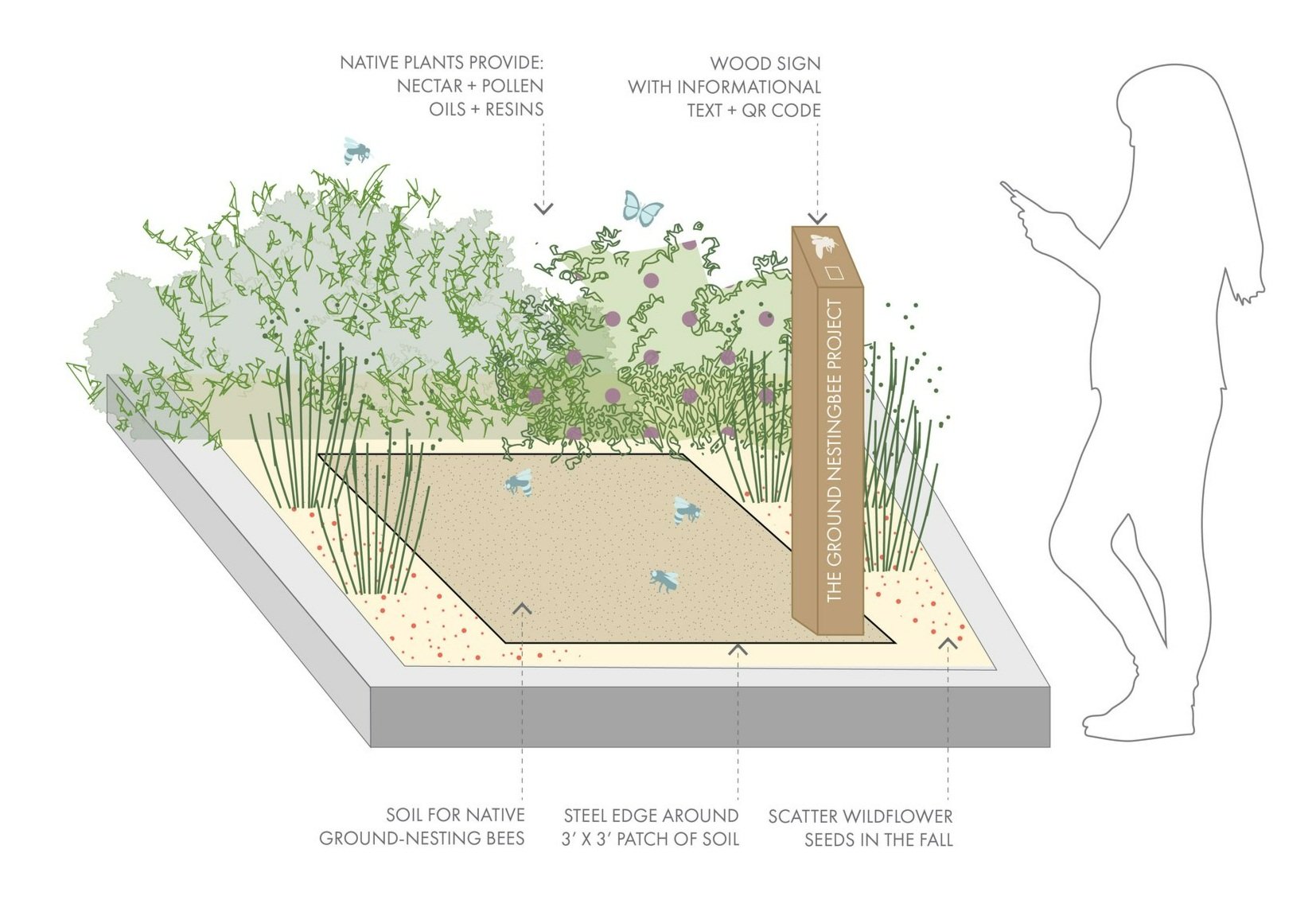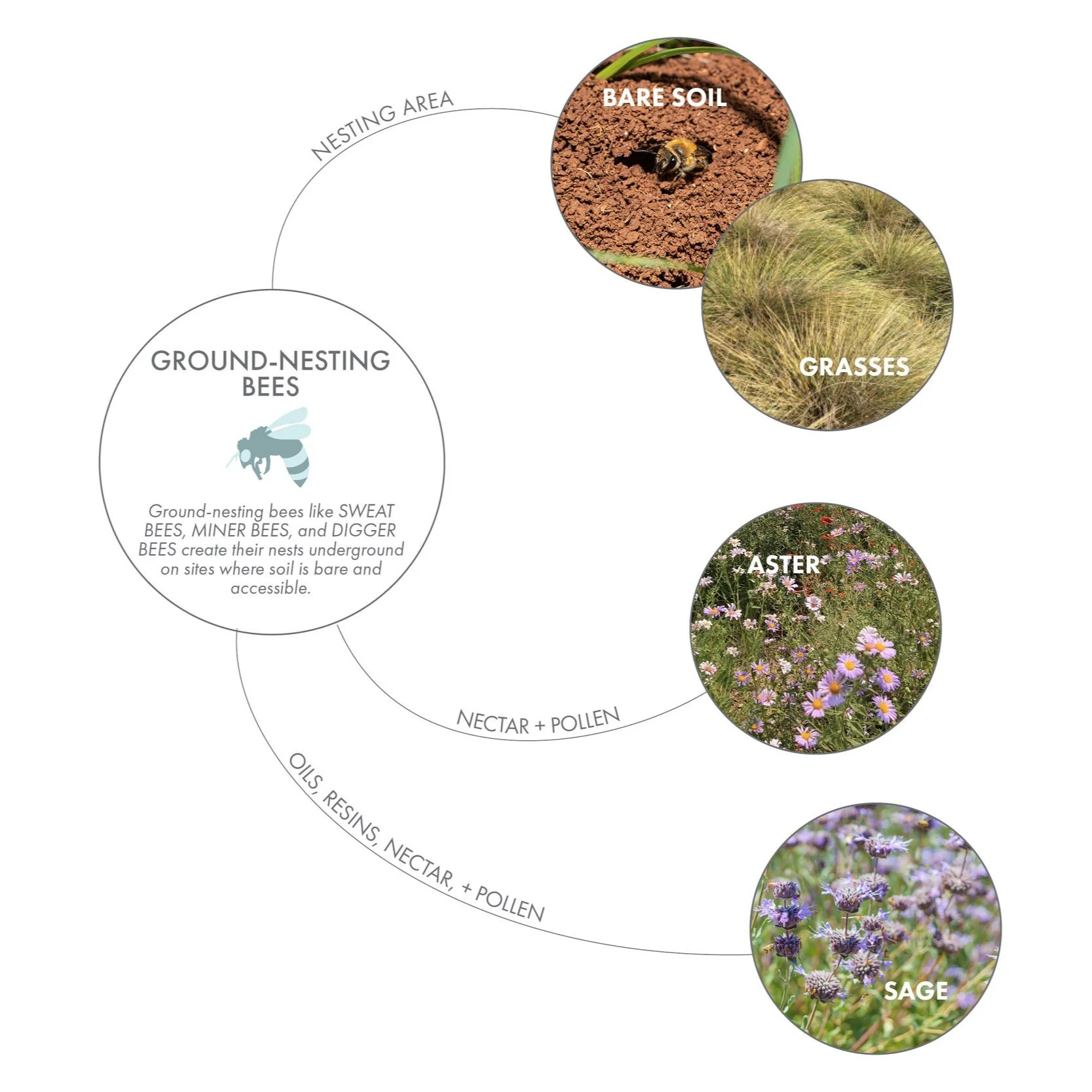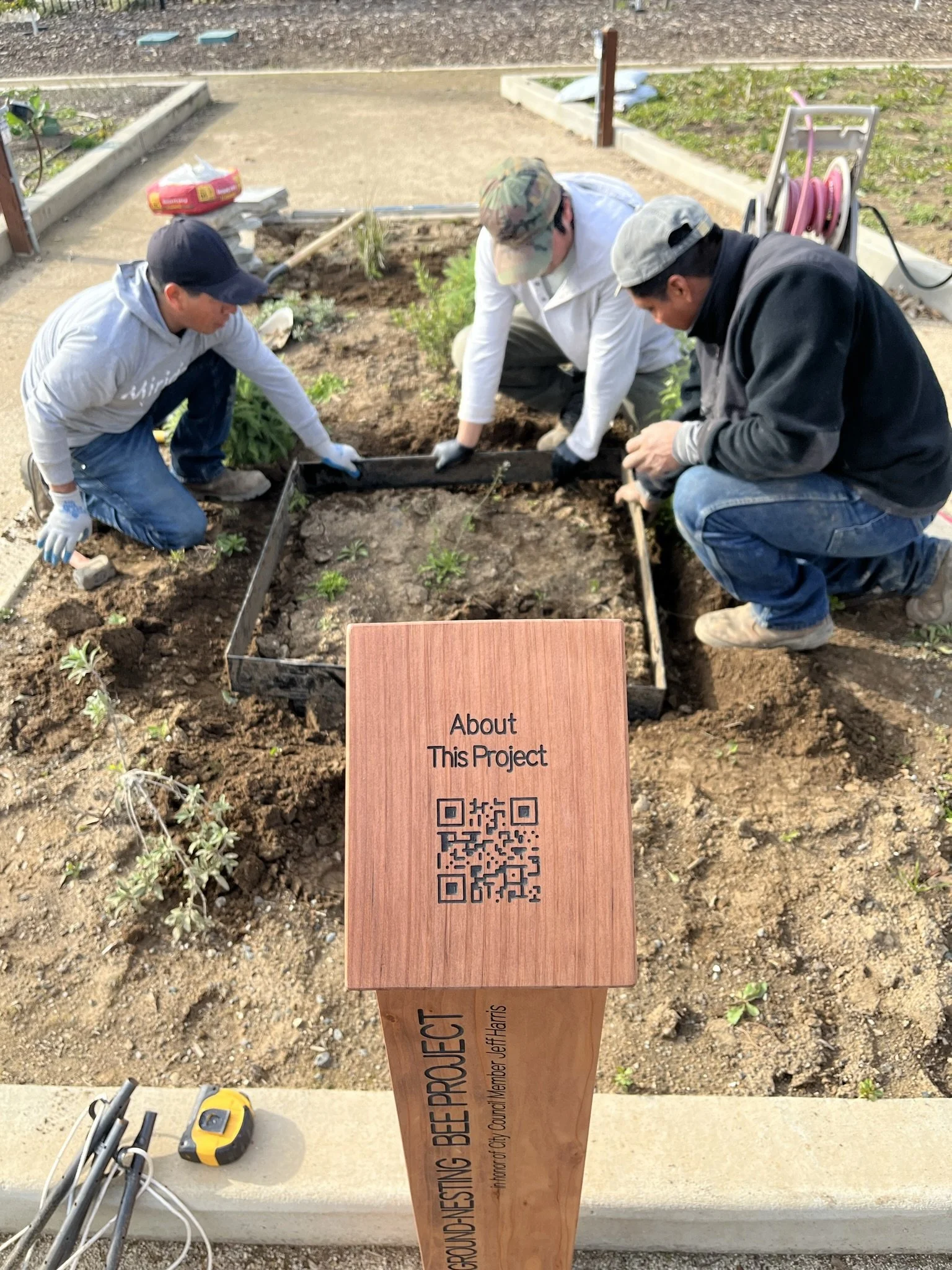THE GROUND-NESTING BEE PROJECT
installation
sacramento, CA | 2022
Did you know that around 70% of the more than 1,500 bee species native to California are ground-nesting? These are largely solitary and non-aggressive bees that build their nests in the soil. Although they don’t receive as much attention as the European honeybee, native bees are critical pollinators for both wild and cultivated plants.
The following diagram of a ground-nesting bee’s life cycle is generalized–each species has its own unique, fascinating biology.
NEST dug and sealed in the ground
EGG laid on pollen ball
LARVA feeds off pollen ball
PUPA grows into dormant adult
ADULT emerges in the spring
FORAGING for food and nesting resources
The California native plants surrounding this ground-nesting bee site provide a diverse array of resources required by native bees. These plants also provide nectar and pollen for other pollinators such as moths and butterflies, as well as food and shelter for birds and other species of wildlife.
The plants growing here provide different materials native bees need:
OIL + RESIN RESOURCE: sages, mints, and other glandular plants provide oils and resins utilized by ground-nesting native bees to construct their nests.
NECTAR + POLLEN BANK: colorful perennials, including Aster, Yarrow, and Woolly Sunflower, have staggered bloom times that provide nectar and pollen for native bees and other pollinators throughout the year.
GRASSES: grasses, sedges, and rushes create cover for a variety of species. If surrounding soil is left bare, it can become good habitat for ground-nesting bees. Native bunchgrasses can also be overwintering habitat for bumble bee queens.
The Ground-Nesting Bee Project is a replicable habitat module that, when repeated across multiple sites, provides a framework for sustained research on native bees and the environmental benefits of native garden landscapes.
PLANT PALETTE
Oil + Resin Resource:
Salvia clevelandii ‘Winnifred Gilman’ (Winnifred Gilman Sage)
Salvia mellifera (Black Sage)
Nectar + Pollen Bank:
Achillea millefolium (Yarrow)
Eriophyllum lanatum (Woolly Sunflower)
Symphyotrichum chilense ‘Purple Haze’ (Purple Haze Aster)
Grasses:
Muhlenbergia rigens (Deergrass)
LEARN MORE
UC Berkeley Urban Bee Lab
Xerces Society for Invertebrate Conservation
The River District
Images by Miridae






